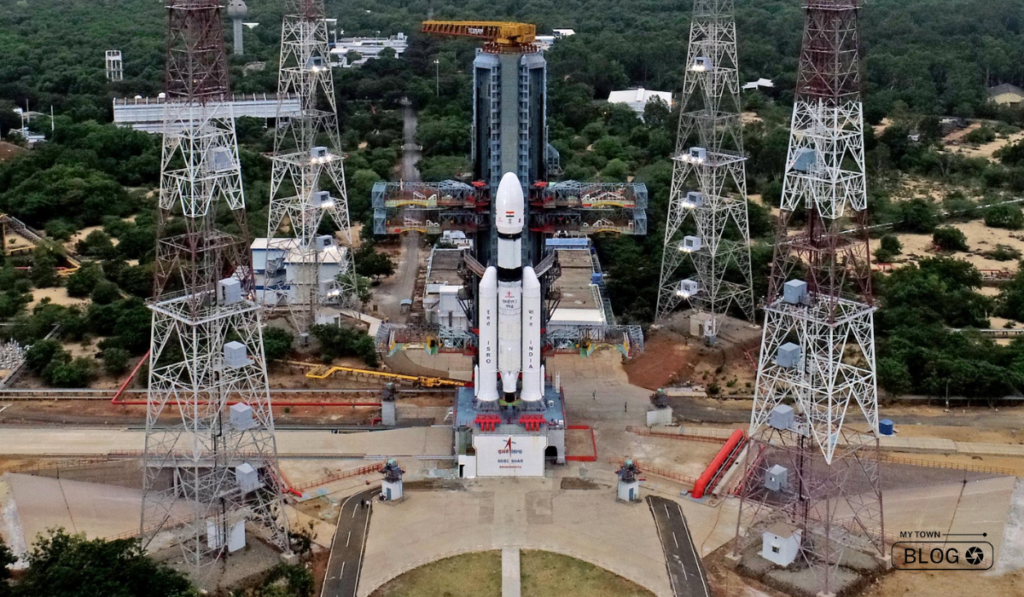The Indian Space Research Organisation’s (ISRO) highly anticipated Chandrayaan 3 mission successfully lifted off from the Satish Dhawan Space Centre in Sriharikota at 2.35 PM IST on Thursday, July 14. This significant endeavor aims to propel India into an elite group of nations that have achieved a soft landing on the Moon. A feat accomplished thus far only by the United States, the erstwhile Soviet Union, and China.
Unlike its predecessors, both the United States and the Soviet Union, who encountered multiple spacecraft crashes before achieving successful landings. And China remarkably reached a soft landing on its maiden attempt with the Chang’e-3 mission in 2013. If ISRO triumphs in this mission, it will mark India’s maiden voyage to the lunar surface and firmly establish the country as a key player in lunar exploration.

Chandrayaan-3’s journey
Having completed a successful liftoff from Earth, the spacecraft is now in orbit around our planet as it embarks on its momentous journey towards the Moon. The mission entails a series of critical events, including earth-bound maneuvers, insertion into the lunar orbit, separation of the lander, deboost maneuvers, and a power descent phase for a gentle landing. P. Veeramuthuvel, the project director of the Chandrayaan-3 spacecraft, has outlined these key milestones.
How long will Chandrayaan take to reach the Moon?
To conserve fuel and optimize the mission’s chances of success, Chandrayaan-3 will take a longer route to Earth’s satellite. On average, the Moon is approximately 384,400 kilometers away from our planet. However, with the selected trajectory, the Vikram lander is projected to achieve a soft landing in the South Pole region of the Moon approximately 42 days after the launch, around August 25.
What is the Chandrayaan-3 mission carrying?
The Chandrayaan-3 spacecraft successfully separated from the LVM-3 launch rocket after being placed into the intended orbit around Earth. It is now on its way toward the Moon, consisting of three main components: the propulsion module, the lander module, and the rover module.
The primary function of the propulsion module is to transport the spacecraft from its current Earth orbit to a lunar orbit. Additionally, it carries a payload called “SHAPE” that will conduct spectral and polarimetric observations of Earth from the lunar orbit once the lander module separates. Alongside this payload, there are other scientific instruments on board the mission.


Conclusion
The ambitious mission holds immense promise and excitement for India and the global scientific community. Humanity’s understanding of the Moon and its potential for future exploration and colonization expands with every step forward. As we eagerly await the successful completion of this groundbreaking mission. The world watches with anticipation, ready to witness another remarkable milestone in space exploration.
FAQ
What is Chandrayaan 3?
Chandrayaan-3 is the third lunar exploration mission by the Indian Space Research Organisation (ISRO). It is a follow-up mission to Chandrayaan 2, with the goal of landing a rover on the lunar surface.
What improvements have been done for Chandrayaan 3?
ISRO has learned valuable lessons from Chandrayaan 2 and has made several improvements for Chandrayaan 3. These improvements include enhanced system reliability, strengthened landing gear, and better communication systems to ensure a successful landing.
How will Chandrayaan 3 benefit scientific research?
Chandrayaan 3 aims to expand our understanding of the Moon’s geological processes, history, and resources. The data collected by the mission will contribute to scientific research related to lunar geology, mineralogy, and the Moon’s evolution. It will also pave the way for future human missions to the Moon.
Will Chandrayaan 3 have a rover?
Yes, Chandrayaan 3 is carrying a rover to the lunar surface. The rover has equipped with scientific instruments to study the Moon’s surface and gather data about its composition and geology.








